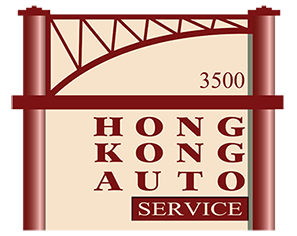Pothole damage? Shocks, struts and alignment can be affected
[youtube http://www.youtube.com/watch?v=yNG-e_04Q_g?list=PLc3uF1gTNvcI15l9xVXfG0H5K0A7a4s26]
You might get a heated argument over whether spring, summer, fall or winter is the best season, but everyone seems to agree on the worst: pothole season. And this year already has produced a bumper crop of impressive pothole specimens.
These holes can do a lot of damage to tires, wheel rims, shocks and struts, along with knocking your car out of alignment.
While it’s pretty obvious if your tire is blown or your wheel rim is heavily bent, other damage might not be so readily apparent. Here are some types of pothole damage and how you can tell if that’s what ails you.
6 Signs You May Need New Shocks or Struts
- Your ride quality is poor. If you are starting to feel that your vehicle is more bouncy or rough or tends to “roll” on turns, it’s time to get your vehicle’s suspension inspected.
- Your vehicle nose dives when braking. Nose diving is caused when you apply your brakes, and the front of the vehicle starts to point toward the ground. In severe cases, there can be longer braking times and a momentary loss of steering. This is because your shocks or struts are not strong enough to handle the weight of the vehicle.
- Your vehicle has “body roll.” This is a term used to describe how the body of a vehicle feels based on the overall movement. If the shocks of your car or truck are starting to go bad, even on the slightest turns, the body will have a leaning feel. Again, this can be a safety issue, so have your vehicle inspected.
- Your vehicle “squats” when accelerating from a dead stop. If your shocks and struts are bad, when you hit the gas pedal, the momentum of the vehicle will be transferred to the rear end, which will cause the front end to rise slightly into the air and resemble a boat on the water.
- There’s visible damage to a shock or strut, including dents, cuts or leaks. Each shock or strut is a piston-like design that has an internal reservoir of hydraulic fluid that helps stabilize and control the vehicle body and your wheels. Evidence of a damaged or leaking shock or strut is an easy clue that it’s probably time for some suspension work.
- Your vehicle squeaks. Bumps, potholes, getting in and out of the vehicle and braking can cause your suspension to protest loudly. In addition to the shocks and struts, the squeaking also can be caused by worn ball joints or bushings.
4 Signs You Need a Wheel Alignment
- The tires are not wearing evenly. If you see that any portion of your tire tread is wearing more than another, your car most likely is out of alignment. You may also have a bent or worn suspension or steering part, and that’s something we would identify as part of the pre-alignment inspection. (The inspection is important because you can’t properly align a vehicle if there’s a bad tie-rod, for example.)
- The vehicle pulls to one side while driving. In extreme cases, the vehicle will try to turn to one side or the other and you’ll have to fight with the steering wheel. If the misalignment is less severe, it will drift to one side, but it will be easier to control.
- The front end shakes. If you notice your front end shaking, there probably are other issues, along with the car being out of alignment. Definitely call us to have the vehicle checked out as soon as possible. The vibration is no fun to deal with while driving, and it could be wearing away at your tire tread.
- The steering wheel is crooked while the vehicle is going straight ahead. This one’s a dead giveaway that you need your car or truck aligned.
If your vehicle is being plagued by any of these conditions, bring your car in for an inspection. Hong Kong Auto Service’s auto repair experts will thoroughly check your tires, shocks and struts, wheel alignment and more so you feel confident out on the road.
